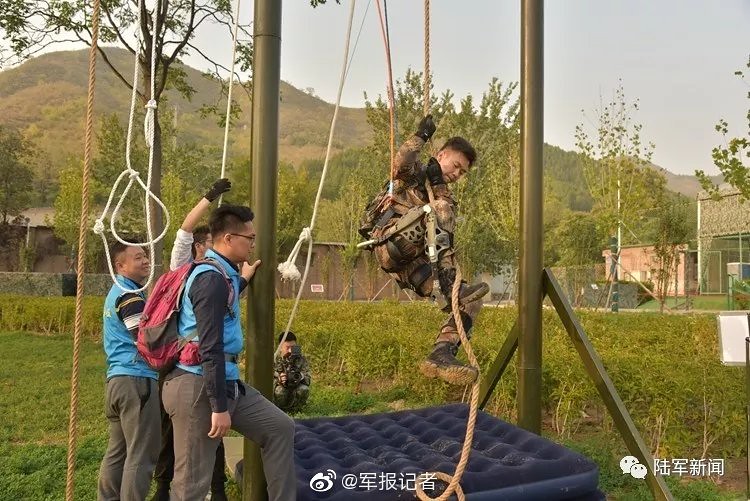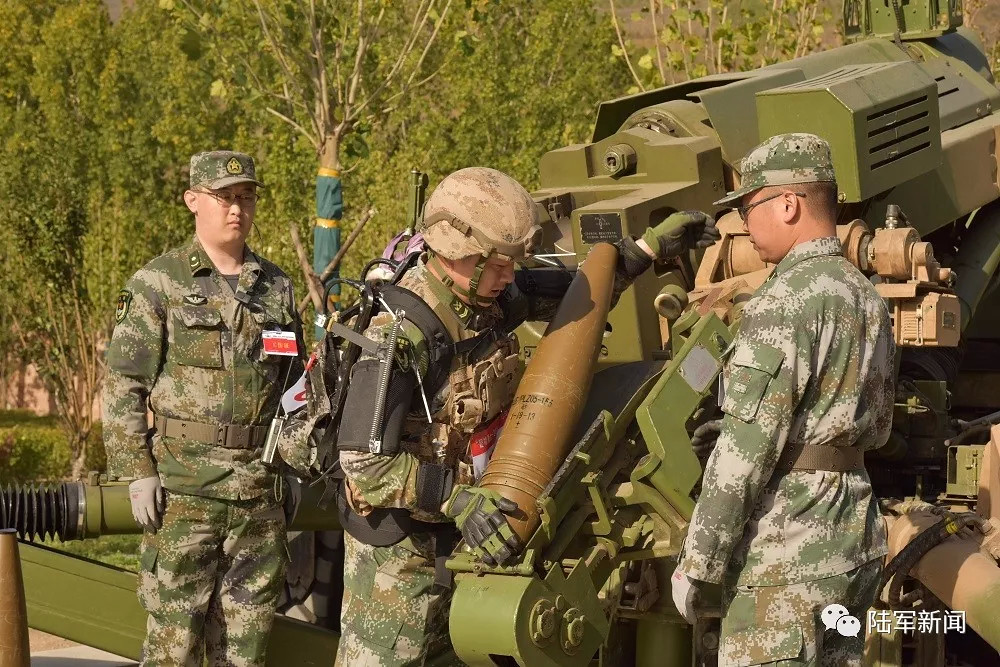You are using an out of date browser. It may not display this or other websites correctly.
You should upgrade or use an alternative browser.
You should upgrade or use an alternative browser.
Power Armor?
- Thread starter solarz
- Start date
solarz
Brigadier
China's HULC-styled exoskeleton
View attachment 10725View attachment 10726View attachment 10727View attachment 10728
Exoskeleton competition 2019. Image quality rather poor.





Check out the first quote, the images are from 2014. What a difference 5 years make!
SinoSoldier
Colonel
One more...

Interesting note, this is the new PCL-181 (export SH-15) howitzer.
plawolf
Lieutenant General
One more...

Interesting development, field logistics was one of the fields identified as a possible area of early adaption for early gen exo suits.
However, I think they need to provide wrist and hand powered support also for tasks like loading cannon rounds.
The wrist is the weakest part of the equation in terms of human arm lifting and loading capabilities. It’s easy for regular people to develop their arm muscles to the point where they can lift more weight then their wrists can support, which is why wrist injuries are very frequent.
Add in powered support for the muscles in the arms and the limitations of the wrists become even more stark.
Notice how the soldier is resting the front of the shell on his forearm and not holding it with his hand to keep the weight off his wrist.
Awkward and dangerous when handling high explosive, especially in combat conditions.
If adding powered wrist and finger support is too complex/expensive, an easy workaround would be powered clamps that can hold the shell, thereby removing the bottleneck and also freeing up the hands of the operator to allow them to do other tasks like pushing buttons or pulling levers, allowing one man to do the job of a whole team.
An interesting application of such an exo suit would be for loaders in tanks.
I know Chinese tanks currently do not use a loader, and instead use autoloaders, but with such technology, one of the main weaknesses of having a human loader - fatigue, can be significantly mitigated.
Within a tank, it is also possible to have a hardline power source, thereby also eliminating one of the main limitations of early gen exo suits in the form of power source.
The benefit of a human loader with powered exo suit would be that it would easier to better protect ammo stored in the tank to provide better survival prospects for the crew in case of penetration.
TerraN_EmpirE
Tyrant King
The problem then is the need for dexterity. That would demand a complex design. That allows both dexterity and support. Something simple is better even if it’s just looping a sling around it.Interesting development, field logistics was one of the fields identified as a possible area of early adaption for early gen exo suits.
However, I think they need to provide wrist and hand powered support also for tasks like loading cannon rounds.
The wrist is the weakest part of the equation in terms of human arm lifting and loading capabilities. It’s easy for regular people to develop their arm muscles to the point where they can lift more weight then their wrists can support, which is why wrist injuries are very frequent.
Most military high explosives are highly stable. You can shoot a block of C4 without it going Boom. But taze it and boom. Modern Military grade and commercial grade are very safe. It’s the anarchist cookbook stuff that is iffy. The stuff in a homemade suicide vest isn’t likely to be designed with safety in mind. But the stuff in a 155mm Howitzer shell is likely very safe even from rough handling after all guys like him are sling shells like that all the time.Awkward and dangerous when handling high explosive, especially in combat conditions.
The main weakness of a Human loader in a tank is not fatigue. It’s a very rare tank battle that last more than a few rounds down the tube. The main issue is round placement.I know Chinese tanks currently do not use a loader, and instead use autoloaders, but with such technology, one of the main weaknesses of having a human loader - fatigue, can be significantly mitigated.
Automatic loaders move the shell from the ready magazine to the loader arm and into the breach.
A Human loader in a tank has to pull the shell from the rack and sling it into the breach. What slows the loader is that there are normally a small number of shells in the sweat spot. That is the place in the ammo rack that is easy to reach. Where issues start is once those shells are fired. Because more and more the loader is digging and contorting to try and pull more ammo from harder to reach spots.
Now some tanks like the Merkava split the difference with an Automated ready rack. A similar system was proposed for Abrams. In this system ready ammo is loaded into a drum or conveyer that is behind an armored bulkhead with a small door. The loader pushes a button and the conveyer cycles a round to the dispenser door where the loader can pull it and load it.
The second issue is weight and length of shells. Current 120mm or 125mm are at the generally accepted limit for manually. If NATO chooses to move up to either 130mm or 140mm shells then those Tanks would have automatic loaders. K2 Black Panther from South Korea is stated as ready for 140mm all it needs is the ammo and gun tube. Abrams also had a prototype for a autoloader. Just no need to install if 120mm is still good enough.
Its not Tanks where a loader ex suit I think might be more suitable. It’s Flight lines and FARPS. Arming aircraft is still done to a large degree by Hand. Missiles that weigh as much as the airmen who load them are mounted on Attack helicopters and Jet fighters.

